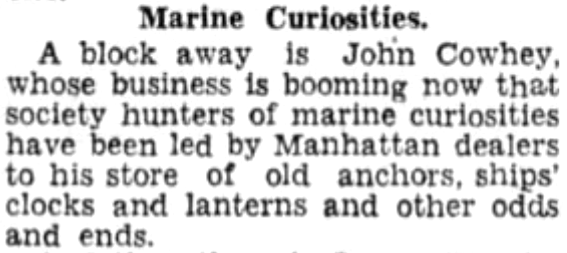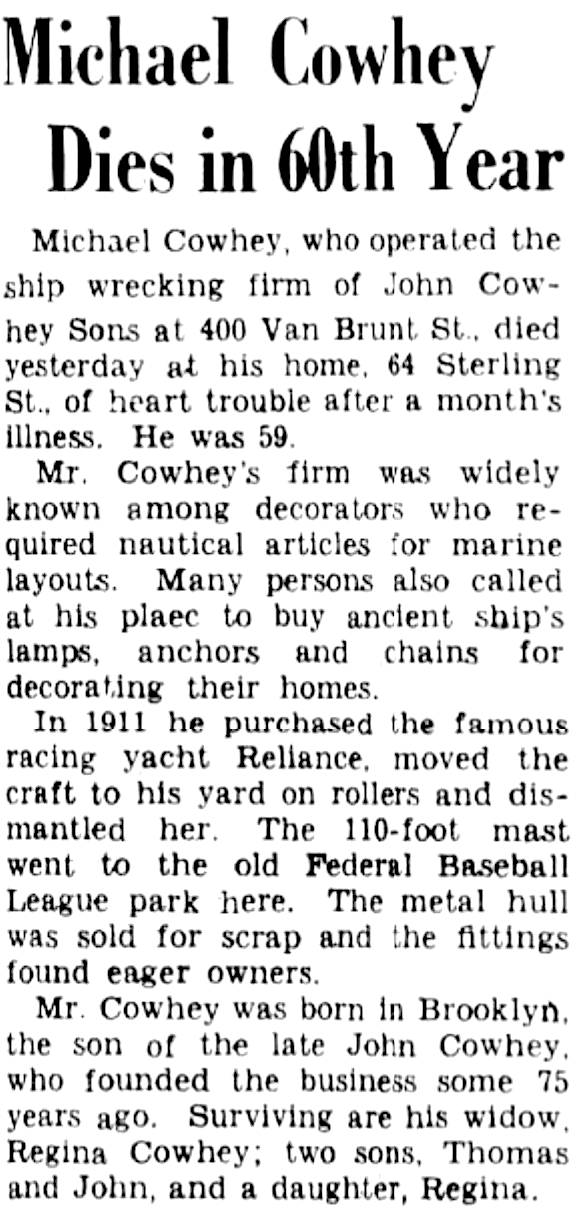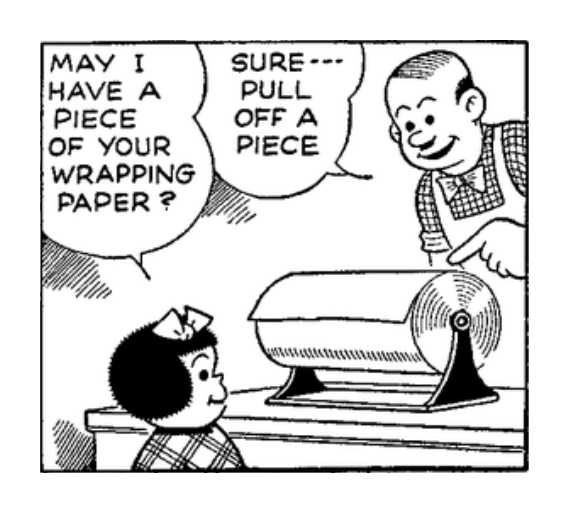[One to four stars. Four sentences each. No spoilers. Sources: Criterion Channel, DVD, HBO Max, TCM, YouTube.]
The Glass Key (dir. Stuart Heisler, 1942). Gangsters and politicians compete for power in an unnamed American city. I like all the principals — Brian Donlevy, Alan Ladd, Veronica Lake — but I didn’t like the movie, which mixes gangsters and politicians with an improbable love story. I appreciated two unusually vulgar moments of spitting: once on a carpeted floor, once into a sink after toothbrushing (you don’t see much of that in ’40s movies). Look for Margaret Hayes (the lonely seductress of The Blackboard Jungle) as a lonely seductress. ★★ (CC)
*
City of Fear (dir. Irving Lerner, 1959). I’d think of it as a low-key Kiss Me Deadly. Here “the great whatsit” is a container of Cobalt-60 in the hands of an escaped con (Vince Edwards) who thinks he’s holding a million dollars’ worth of heroin. Much attention to police procedure and technology, with Lyle Talbot, some interchangeable detectives, and Geiger counters. Cinematography by Lucien Ballard, editing by Robert Lawrence, and a score by Jerry Goldsmith add considerable value to a predictable story. ★★★ (YT)
*
Dust Be My Destiny (dir. Lewis Seiler, 1939). Good Warner Brothers stuff that looks forward to They Live by Night. John Garfield and Priscilla Lane play a couple on the run: he’s a fugitive who didn’t kill the boss at a work farm; she’s the boss’s daughter. As one would expect, the movie’s sympathies are with the runaways. Henry Armetta adds considerable humanity to the story as a café owner who’s willing to protect a young couple from the law. ★★★ (CC)
*
The Best Years of Our Lives (dir. William Wyler, 1946). I’d encourage anyone who hasn’t watched it not to fall for the claim that it’s a tidy, sentimentalized story of homecoming from the Second World War. To the contrary: the movie presents the struggles of returning veterans with great frankness and pathos, examining alcoholism, infidelity, fear of intimacy, meager employment opportunities, physical disability, and post-traumatic stress. Every time I watch I notice a detail I’ve missed: this time it was drugstore clerk Fred Derry (Dana Andrews) ducking as a toy plane flies through the store and Peggy Stephenson (Teresa Wright) catches it. The plane provides a nice way for Fred and Peggy to meet cute, but now I wonder if we’re meant to see Fred’s response as that of a bombardier who’s seen one too many enemy planes coming at him. ★★★★ (TCM)
*
Seconds (dir. John Frankenheimer, 1966). This extraordinary film, which we’d never heard of until Elaine noticed it at the Criterion Channel, is unmistakably from the director of The Manchurian Candidate. Briefly: a mysterious company has developed procedures to allow tired, disaffected middle-aged men to fake their deaths and gain new (second) lives, with new faces, new fingerprints, and new identities. It’s the American male dream of freedom from responsibility, as described by a company executive: “In short, you are alone in the world, absolved of all responsibility except to your own interest.” Starring Rock Hudson and Salome Jens, and filmed in sinister black and white by James Wong Howe. ★★★★ (CC)
[A bit of lore: Seconds is the movie that freaked out Brian Wilson when he entered a showing late and heard a character say “Come in, Mr. Wilson.”]
*
Y tu mamá también (dir. Alfonso Cuarón, 2001). It’s like an Almodóvar movie with another director. A great road movie, with Julio and Tenoch, two male adolescents (Gael García Bernal and Diego Luna) inviting an attractive young married woman, Luisa (Maribel Verdú), on a trip to Boca del Cielo (Heaven’s Mouth), a non-existent beach (Luisa’s husband is away). The three protagonists test the boundaries of friendship and sexuality, with moments of awkward intimacy, pleasure, and recrimination. Watching the movie a second time, I understand the narrator’s role more clearly: he’s an all-knowing voice that sees the present moment in a much larger context, and I’m afraid that’s all I can say. ★★★★ (DVD)
*
Beyond This Place, aka Web of Evidence (dir. Jack Cardiff, 1959). A father-son romp in a park, then a scene from Liverpool during the Blitz, and then twenty years later, the boy of that first scene, Paul Mathry (Van Johnson), has returned to Liverpool from the States. And the question to answer: what became of his father Patrick (Bernard Lee, 007’s “M”)? A darkly quiet story of research and love, both familial and romantic. Lee and Vera Miles (as Lena Anderson) turn in great performances. ★★★★ (YT)
*
Night People (dir. Nunnally Johnson, 1954). A GI is kidnapped from postwar Berlin and held to be traded for two West Berliners — and I can’t help but think of Brittney Griner’s plight. The plot becomes tricky, but I found little excitement or suspense in its unfolding. Gregory Peck and Broderick Crawford are one-dimensional here: Peck as the mumbly lieutenant colonel in charge of the American zone; Broderick Crawford as the GI’s angry well-connected father. The title is misleading: there’s little noir in this CinemaScope production. ★★★ (YT)
*
The Automat (dir. Lisa Hurwitz, 2021). Long before its invention, the slogan “All Are Welcome” might have served as the motto of Horn and Hardart’s Automats, which served wonderful food to all comers for a handful of nickels. This deeply appreciative non-ironic documentary tells the story of the Automat’s rise and fall, as urbanites left for the suburbs and the restaurants grew emptier at dinnertime and on weekends. With a fine array of nostalgic eaters, including Ruth Bader Ginsburg, Colin Powell, and Mel Brooks, who describes the restaurants as “insane centers of paradise.” I ate at an Automat just once, in the 1980s, with my friend Aldo Carrasco, probably after a visit to the Gotham Book Mart, probably just pie and coffee — and I didn’t know enough to appreciate the place (which was, I admit, depressing), and now I wish I had had a meal, including creamed spinach. ★★★★ (HBO)
*
The Tattered Dress (dir. Jack Arnold, 1957). James Blane (Jeff Chandler), a “New York lawyer” known for representing mobsters, comes to a Nevada town to defend a wealthy man charged with murdering the star athlete with whom his wife was having an affair. When the jury votes for acquittal, the local sheriff (Jack Carson), a friend of the murdered man, decides to exact revenge. Chandler does well as a suave servant of wealth, and Elaine Stewart as the philandering spouse adds more than a touch of lurid glamor. But the real star of the movie is Jack Carson, playing against type, and his easy cheerfulness marks his character as a true sociopath. ★★★★ (YT)
*
Screaming Mimi (dir. Gerd Oswald, 1958). Anita Ekberg stars as a dancer under the spell of a mad psychiatrist. We see her solo act, with ropes and chains and much writhing, twice, in a club called the El Madhouse, run by Gypsy Rose Lee. Nothing about this film makes sense: the background music is recycled from Leonard Bernstein’s score for On the Waterfront, and the Red Norvo Trio, another El Madhouse act, billed as a trio, is in fact a quartet. Preposterous film noir, with a star added for Burnett Guffey’s excellent cinematography.★★ (YT)
*
The Long Haul (dir. Ken Hughes, 1957). Post-WWII Liverpool, with Victor Mature as Harry Miller, an American ex-serviceman driving long-distance truck routes for his British wife’s uncle. Harry’s wife Connie (Gene Anderson) is cold and critical, and Harry falls into a relationship with Lynn (Diana Dors), the girlfriend of Joe Easy (Patrick Allen), the Johnny Friendly-like head of a trucking company and criminal enterprise. A long sequence devoted to getting a truckload of stolen furs across dangerous terrain is as suspenseful in its own way as the struggles in Henri-Georges Clouzot’s Wages of Fear. Mature and Dors are terrific, the one conflicted, the other desperate, in a movie that is, finally, in unexpected ways, about loss and betrayal and forgiveness. ★★★★ (YT)
Related reading
All OCA movie posts (Pinboard)




























